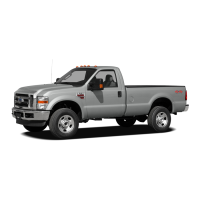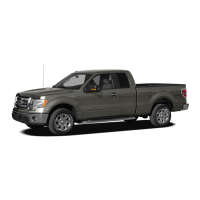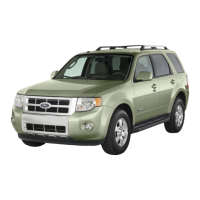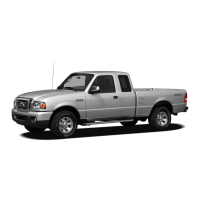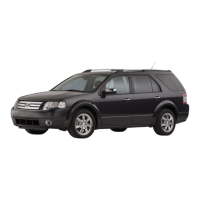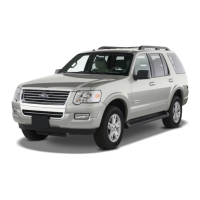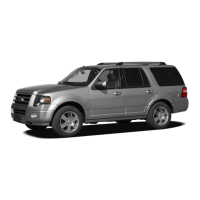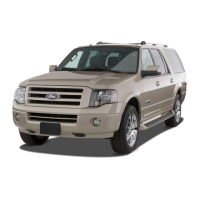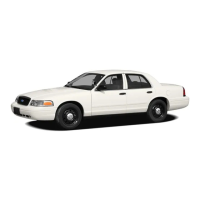
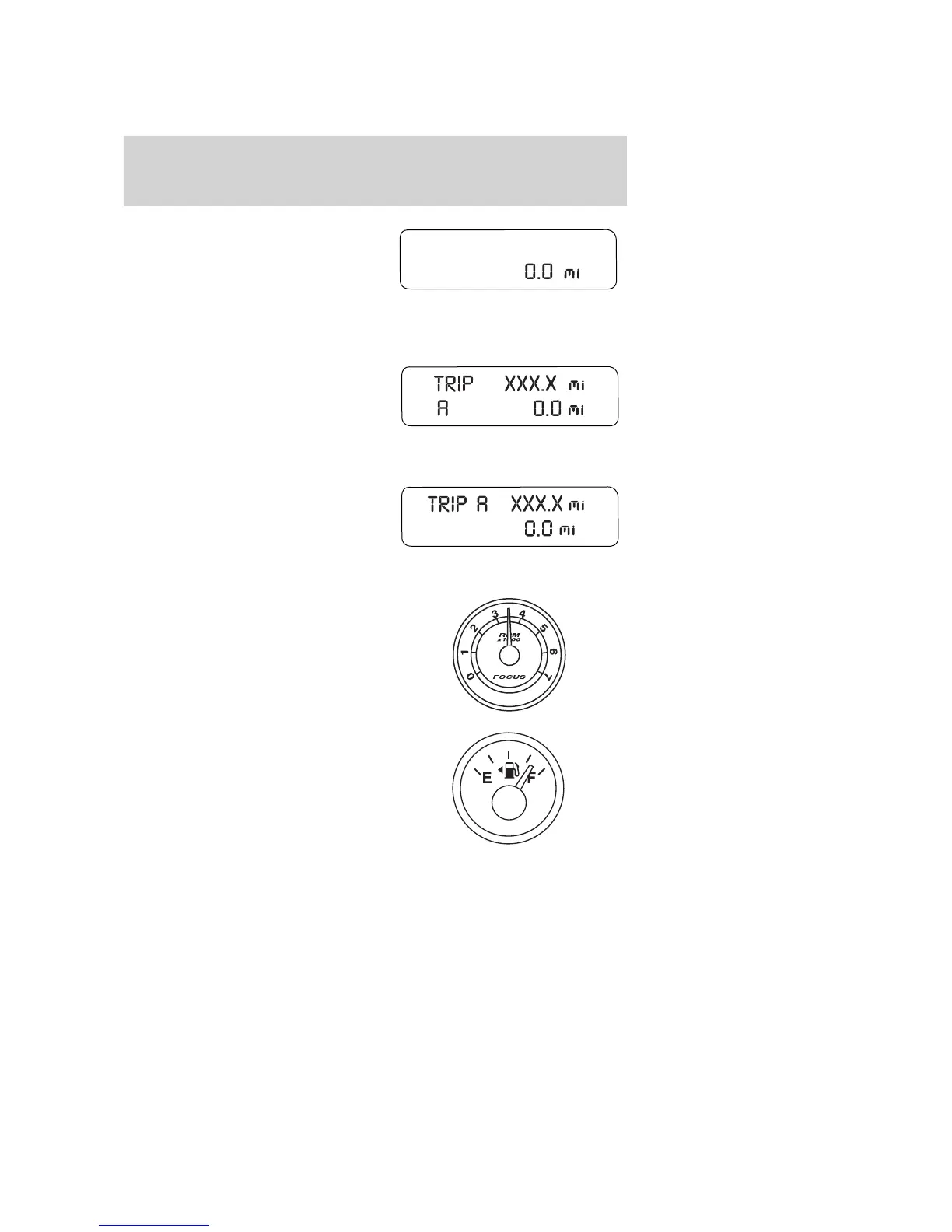 Loading...
Loading...
Do you have a question about the Ford 2009 Focus and is the answer not in the manual?
| Brand | Ford |
|---|---|
| Model | 2009 Focus |
| Category | Automobile |
| Language | English |
Guidance on proper vehicle break-in procedures to ensure optimal performance and longevity of moving parts.
Important information regarding the New Vehicle Limited Warranty and special instructions for safety.
Alerts from the instrument cluster indicating vehicle conditions that may require attention or repair.
Explanation of the 'Service engine soon' light, its meaning, and actions to take when it illuminates or blinks.
Information on the brake system warning light, its function, and what to do if it remains illuminated.
Details on the ABS warning light, its malfunction indicators, and normal operation during braking.
Information on the engine coolant temperature gauge and what to do if the engine is overheating.
Explanation of the low tire pressure warning light and recommended actions for checking tire pressure.
Explanation of the vehicle's gauges, including the speedometer and engine coolant temperature gauge.
How to read and reset the odometer and trip odometer features for tracking mileage.
Instructions for using the AM/FM radio, including volume, tuning, seeking, and scanning stations.
Details on loading discs, playing CDs and MP3s, and using features like LOAD and EJECT.
Information on SIRIUS satellite radio channels, reception factors, and subscription services.
How to adjust bass, treble, balance, fade, and speed-compensated volume for optimal audio.
Overview of the manual climate control system components and their functions.
Explanation of how to control the temperature of the airflow within the vehicle.
Instructions on how to operate the rear window defroster to clear fog and ice.
Operation of the headlamp control, including low beams, parking lamps, and fog lamps.
How to adjust the brightness of the instrument panel and interior lighting.
Instructions for vertical aim adjustment of headlamps to ensure proper road illumination.
How to operate the turn signal lever for left and right turns.
Information on lamp assembly condensation and how to replace exterior and interior bulbs.
Operation of the windshield wipers and washer fluid, including courtesy wipe feature.
Instructions on how to adjust the steering wheel for driver comfort and proper position.
Information on the electronic compass, its display, and potential interference or calibration.
Operation of power windows, including one-touch down and window lock features.
Explanation of the auto-dimming function for the interior rearview mirror to minimize glare.
Guidance on setting, increasing, reducing, and disengaging the speed control system.
Functions of steering wheel controls for radio operation and SYNC system.
How to open, close, tilt, and use the bounce-back feature of the moon roof.
Information on the message center display, vehicle system monitoring, and status features.
Options for resetting functions, accessing info menu, and configuring system settings.
Operation of power door locks, including smart lock features and autolock functionality.
Step-by-step guide for programming the autolock and autounlock features using the power door lock switch.
How to engage and disengage childproof locks on the rear doors for child safety.
Operation of the remote entry system for locking, unlocking, opening the trunk, and panic alarm.
Instructions for replacing the battery in the remote entry transmitter.
Explanation of the anti-theft system, its indicator light, and how it prevents unauthorized starting.
Information on the vertical adjustment of front row head restraints for proper positioning and safety.
Instructions for adjusting the front seat forward/backward and the seatback angle.
How to operate the heated seats, including precautions for safe use.
Guidance on raising and lowering rear seat head restraints for passenger safety.
Instructions on how to fold down one or both rear seatbacks for increased cargo space.
Overview of the Personal Safety System, including airbags, seat belts, and sensors.
Explanation of how the system detects occupants and controls front passenger airbag deployment.
Essential safety guidelines for wearing seat belts, including proper positioning and occupant safety.
Instructions on how to fasten and unfasten combination lap and shoulder seat belts correctly.
Description of the normal retractor mode for seat belts and how it locks in response to vehicle movement.
How to use and disengage the automatic locking mode for child safety seats.
Instructions for using locking cinch tongues on rear center seat belts for proper fit.
How to adjust the shoulder belt height for proper positioning across the shoulder.
Information on safety belt pretensioners and when they activate during a collision.
Explanation of the safety belt warning light and chime, and their conditions of operation.
Details on the Belt-Minder feature for additional safety belt reminders.
Guidelines for installing infant/toddler seats and child safety seats with combination belts.
Information on using the LATCH system for child seat installation, including lower anchors and tether straps.
Explanation of booster seats and when children should use them for proper vehicle safety belt fit.
Why shoulder belts are crucial when using booster seats to prevent head injury in collisions.
Explanation of tire quality grades: Treadwear, Traction, and Temperature ratings.
Definitions of common tire terms, including Tire Label, TIN, and load/inflation limits.
Guidelines for properly inflating tires, including recommended pressure and checking procedures.
How to inspect tires for wear, damage, and age-related degradation.
Explanation of the information contained in the DOT Tire Identification Number on tire sidewalls.
Guidelines for selecting and using correct replacement tires and wheels for vehicle safety.
Information on the TPMS, its indicator lights, and system operation.
Guidance on proper vehicle loading, including definitions of weight ratings like GVWR and GAWR.
Steps to calculate the correct load limit for occupants, cargo, and trailer weight.
Procedures for starting the engine, including ignition positions and starting the vehicle.
Key safety steps before starting the vehicle, including seat belt usage and accessory checks.
Recommendations for safe and effective use of the engine block heater, including extension cord guidelines.
Information on brake operation, potential noises, and the brake system warning light.
Explanation of the ABS system, its operation during hard braking, and the ABS warning lamp.
How to set and release the parking brake, and what the brake warning lamp indicates.
Operation of the Traction Control system, its active light, and how to switch it off.
Features of AdvanceTrac, including Traction Control (TCS) and Electronic Stability Control (ESC).
Understanding gearshift positions, brake-shift interlock, and adaptive shift strategy.
Guidance on operating the clutch, starting the vehicle, and recommended shift speeds.
Precautions and procedures for driving through water to prevent damage and ensure safety.
Details on the complimentary roadside assistance program and what services are covered.
How to use hazard flashers for safety when the vehicle is disabled or creating a hazard.
Instructions on how to reset the fuel pump shut-off switch after an accident.
Information on fuse amperage ratings, colors, and the passenger compartment fuse panel layout.
Step-by-step guide for safely changing a flat tire, including precautions for TPMS sensors.
Guidelines and restrictions for using dissimilar spare tires/wheels to avoid vehicle control loss.
Detailed instructions and safety precautions for jump starting a vehicle using jumper cables.
Recommendations for professional towing services and proper hook-up procedures.
Information on obtaining warranty repairs and locating authorized dealers.
Guidance for vehicle owners traveling or living outside the U.S. and Canada.
How to report vehicle safety defects to NHTSA and Ford Motor Company.
Proper techniques for washing the vehicle exterior, including product recommendations.
How to clean and protect exterior chrome parts, avoiding abrasive materials.
Tips for cleaning vehicle windows and wiper blades for optimal visibility.
How to clean the instrument panel, interior trim, and cluster lens safely.
Proper methods for cleaning and conditioning leather seating surfaces.
List of recommended genuine Ford and Motorcraft cleaning and detailing products.
Guidance on scheduled maintenance and the importance of using specified parts and fluids.
Safety precautions to follow when performing maintenance or servicing the vehicle.
Diagram and identification of key components located in the engine compartment.
Instructions for adding windshield washer fluid, including fluid type and cold weather precautions.
Procedure for checking the engine oil level and what the dipstick readings indicate.
Recommendations for engine oil viscosity and filter specifications for optimal engine performance.
Information on battery maintenance, cleaning terminals, and safety precautions when working with batteries.
How to check and refill engine coolant, including mixture ratios and temperature protection.
Explanation of the fail-safe cooling system and how it operates when the engine overheats.
Safety precautions and guidelines for handling automotive fuels and refueling.
Recommendations for unleaded fuel types, octane ratings, and fuel additives.
Methods for calculating fuel economy and tips for improving driving habits.
Explanation of the OBD-II system, its function in monitoring emissions, and potential malfunctions.
Procedure for checking power steering fluid level and adding fluid if necessary.
How to check automatic transmission fluid level, including fluid type and operating temperatures.
Instructions for changing the air filter element, including proper seating and potential warranty implications.

